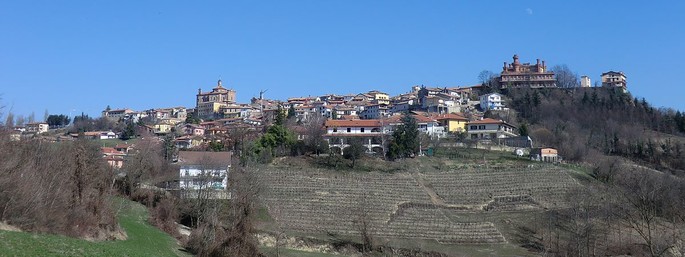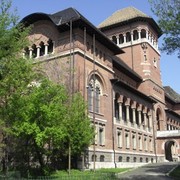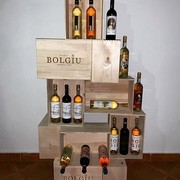I speak of a land that is a stretch of union between Piedmont, with the mountains of the Alps behind it, and Liguria with its gaze towards the sea.
The territory of the Langhe
With a process that began 40 million years ago, with the withdrawal of the sea and the movements of the land that formed the Alps and the Apennines, hills have formed. From the alluvial debris, compacted by the limestone, the blue marls were formed, called in dialect tòv, while the sandy debris originated the sandstone. And it is on these soils that the finest vines from which precious wines originate are born!
The Langhe are divided into High, Medium and Low, depending on the altitude and the crops that are above all vineyards and hazelnuts, thanks also to the confectionery industry of Ferrero.
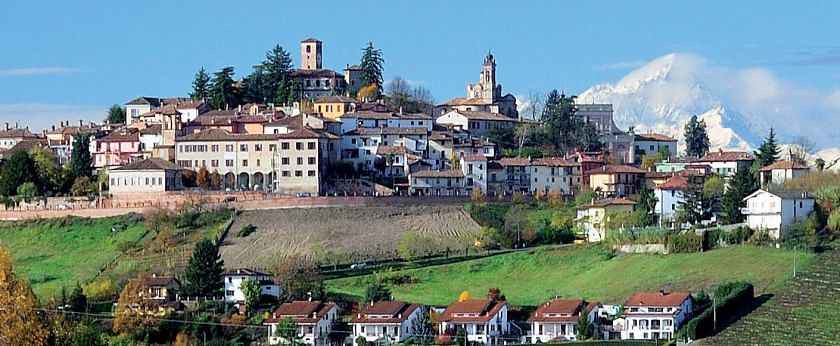
[Neive, credit Flickr]
Since 2014 the Piedmont Wine Landscape: Langhe-Roero and Monferrato has become the fiftieth World Heritage Site which: ... includes a selection of five distinct wine areas and a castle, whose names evoke a deep and ancient experience based on the interaction between man and his environment (...). They offer a panorama of hills cultivated with care respecting the ancient dispositions of the lots, dotted with buildings that structure the visual space: villages, castles, Romanesque churches, farmhouses, ciabots, cellars, warehouses for the aging and commercial distribution of wine , small towns and large cities on the edge of the vineyards. The serial site stands out for the harmony and aesthetic balance of its landscapes, for the architectural and historical variety of the built elements associated with the wine production activities and for the presence of an authentic and ancient art of winemaking.
Detailed there are:
- The Barolo and the castles;
- Barbaresco taken as a typical village model;
- Moscato a Canelli with underground cellars;
- Barbera in Nizza Monferrato;
- Vignale and the Infernòt circuit or the cellars dug into the tuff.
- Furthermore the Castle of Grinzane Cavour, Regional Enoteca of Piedmont.
The itinerary that I propose takes us to Lower Langa and is above all linked to vineyards and art, including castles and medieval villages and passes by three UNESCO sites and one of the most beautiful villages in Italy! Let's start from Novello to end in Barbaresco, passing through the lands of the Barolo and in some of the most beautiful villages in Italy!
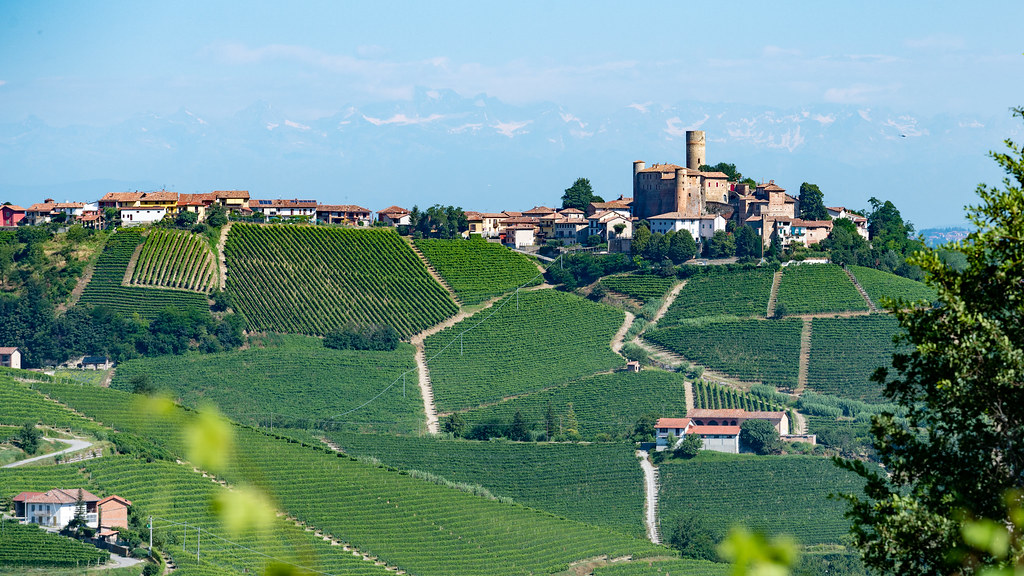
[Castiglione Falletto, credit Flickr]
Novello itinerary
Enjoying a lookout that extends over Monchiero, the Tanaro Valley and the Alps, from the Maritime Alps to the Matterhorn, with neat rows of vines that slope down towards the valley. On the southern slope of the hill you can see the gullies of Rocca di San Nicola, deep inlets eroded by the water. The castle stands out with its neo-Gothic brick façade, partially transformed into a restaurant. Continuing, a medieval tower stands out, the oldest monument that has become a bell tower. Next to it is the parish church dedicated to San Michele Arcangelo, completed in 1783 in Baroque style and the terracotta facade. With a Greek cross and a single nave, it has a dome that rises up to 35 meters high! We continue the Langhe itinerary and descend towards Barolo, but first we stop to take some photos of the hills with rows of vines!
Castello della Volta, legends
Place often photographed, we frame it from afar surrounded by the Nebbiolo vineyards! It dates back to the 12th century by Manfredo di Saluzzo, and Silvio Pellico stayed there. There are many rather gloomy legends ... and one of these would explain the name! It seems that at the beginning of the fourteenth century, during a party and due to considerable lust, God made crumble the vault of the salon as punishment but, having removed the rubble, there was no trace of the guests! Since then the souls in search of peace seem to wander around in the castle. Even the Tower is the object of a mystery: it has been closed for a very long time and there is no access to enter ...
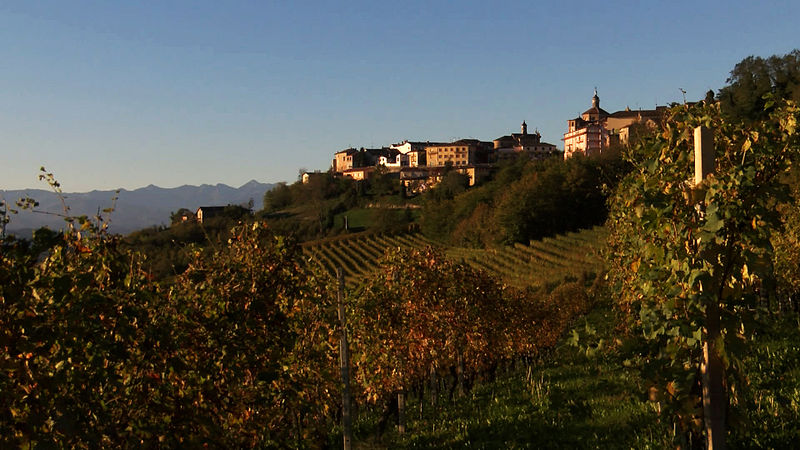
[Novello, credit Federico Moznich]
Barolo, the king.
We arrive in the Olympus of wines and where legend has it that Bacchus lived there, the god of wine ... where else? Object of dominations and wars over the centuries, it experienced peace only at the beginning of the nineteenth century with the Savoys. Beautiful town, well-kept and full of wine bars, dominated by the Castle, home to the Wine Museum, WI.MU, and the Enoteca Regionale del Barolo. The Castle dates back to the 1000s even if the first written trace dates back to the '200 in a notarial deed. In 1325 the Falletti family settled and gave the Castle its name. there was often a guest Silvio Pellico who also held the role of head of the family library. Fallen into a state of neglect, the Municipality bought it in 1970 also thanks to the considerable contribution of the citizens and of the companies in the area! The parish church of San Donato, from the Romanesque period, has housed the tombs of the Falletti family since 1500. The next destination is Grinzane Cavour, where we will stop for lunch, but first let's take a short detour!
Castiglione Falletto
It is assumed that the Castle dates back to the 10th century, although there is trace in a written act of 1191 and became the fiefdom of the Faletti d'Alba family in 1225. Within the walls of the Castle a Roman stele with engraved shoemaker tools was found, demonstrating the presence of settlements already in the first century after Christ!
Royal gossip!
Nearby, in Fontanafredda near Serralunga d'Alba, one can see the vineyards planted in 1878 by Emanuele di Mirafiori, son of Vittorio Emanuele II and Bela Rosin, a historical lover who later became a morganatic wife, that means without the right of succession or privileges ! You can visit the recently restored hunting house, which was the meeting place of the two lovers! With a last look that gets lost in the hills covered with vineyards, we set off towards Grinzane Cavour.
Grinzane Cavour, UNESCO pearl!
In Grinzane Cavour dominates the imposing and beautiful castle which has been the seat of the Regional Enoteca since 1967 and the first in Piedmont. The village is dedicated to the famous statesman Camillo Benso, count of Cavour, who was its mayor for seventeen years. Part of the hill below is cultivated with vineyards by the Agricultural Institute of Higher Education in Alba and where it is possible to follow a walk through the vineyards. Curiosity. Among these ordered rows you can see the sentinel roses, to signal the possible attack of pests or diseases, such as, for example, powdery mildew or white powder!
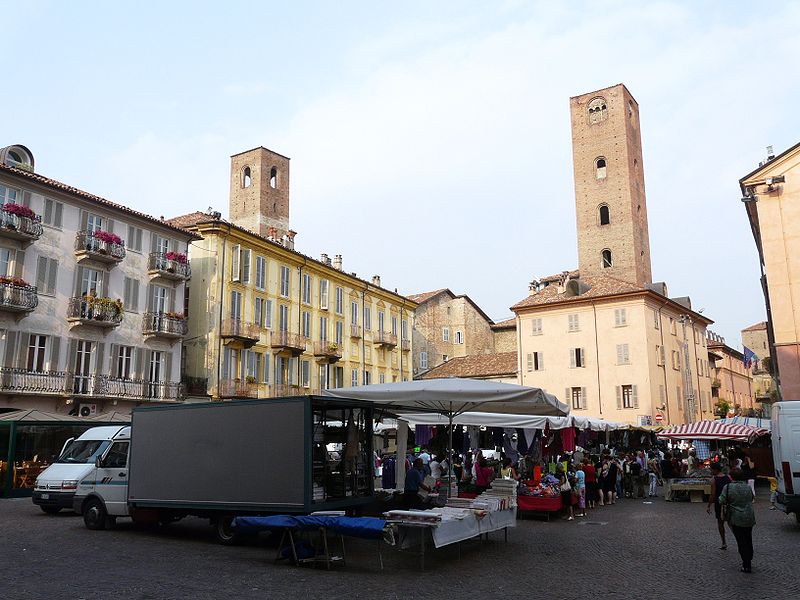
[Alba Piazza Risorgimento, credit Davide Papalini]
Alba, capital of the Langhe.
The beating heart and commercial center not only of the Cuneo area, but of all of Piedmont, it is known throughout the world as the truffle capital with an international fair and headquarters of Ferrero. Beautiful medieval town, includes many ancient monuments such as the Duomo, dedicated to San Lorenzo which is the patron saint of the city, built in the 12th century and remodeled over the centuries. The Conventual Church of San Domenico, from 1292 in Romanesque-Gothic style, has become a museum and you can admire the valuable frescoes of the fourteenth and fifteenth centuries. Valuable is the second oldest church of Alba dedicated to St. John and the Town Hall, located in the city center. In addition to wine and truffles, it includes in the gastronomic sector the meat of the Albese, a carpaccio of raw meat cut with a knife!
Neive, one of the most beautiful villages in Italy.
Village among the most beautiful in Italy since 2001 and almost on the border with the Asti Moscato lands, it has very ancient origins! Among its main monuments, to see the Clock Tower of 1224, the XVIII century Palace of the Counts of Castelborgo with the Gardens. Particular is the Archconfraternity of San Michele, from the second half of the 18th century which is a Catholic temple dedicated to the Archangel for use by the Macedonian Orthodox community. Outside the walls and outside one of the two doors is the Chapel of San Rocco from 1500 and dedicated to him for the protection and healing of the plague.
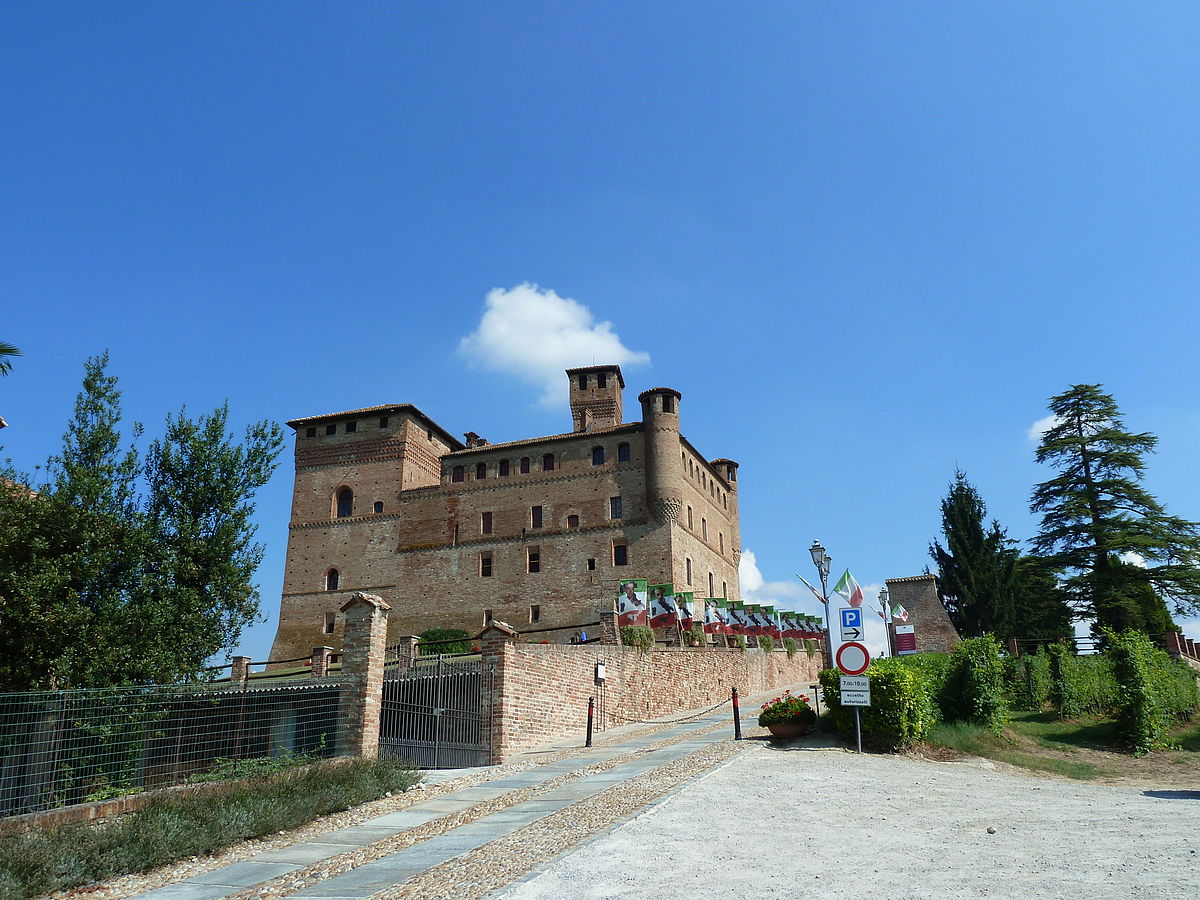
[Castello di Grinzane Cavour, credit BlackLukes]
Barbaresco.
Barbaresco gives its name to the renowned wine produced with Nebbiolo grapes which is then the same as Barolo. At the entrance of the village there is a large painted sundial which is related to the wine cycle, from vineyard cultivation to wine production. In the historic center stands the Palazzo dei Galleani of Barbaresco and Canelli, from the first half of the 1700s. The deconsecrated church of San Donato houses the Regional Barbaresco Enoteca while dominates the Tower, the largest and most massive in Piedmont, symbol of the village.
The itinerary of Langhe winds through hills planted with vineyards and the valley bottom with plots of the Nocciola Tonda delle Langhe which is IGP variety. You can do it on a full day or spend a weekend, expanding the tour. The recommended period, apart from the beauty of the area and the villages that allows tourism throughout the year, is certainly between summer and autumn, with the highlight at the time of the harvest!
Langhe food and wine.
Excellent traditional dishes range from hors d’oeuvre to deserts, offering many delicacies beside those already mentioned, like veal with tuna sauce, tongue with sauce, anchovies al verde, stewed tripe, agnolotti del plin (pasta named for the way they are closed with a pinch), mixed boiled meat with sauce, braised meat al Barolo, stuffing à la financière, the mixed fry, wild hare in civet, jugged pheasant and to finish, delicious desserts: hazelnut cake, stuffed peaches, bonet, cooked cream, and timballo of Martine pears. At the conclusion of a delicious meal, a glass of Barolo Chinato is suggested, an aromatic wine with different spices, including the China Calissaia, an excellent digestive, which comes from an ancient recipe.

